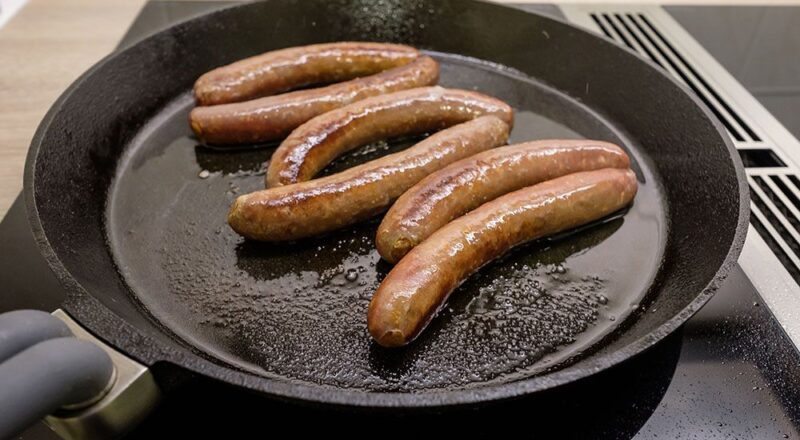The art of slow cooking in cast iron on induction cooktops is gaining popularity among kitchen enthusiasts and professionals alike. The combination of cast iron’s heat retention and an induction cooktop’s precision offers an unmatched cooking experience. Whether you’re a seasoned chef or a home cook, understanding how to utilize these tools can elevate your culinary creations.

What Makes Cast Iron Ideal for Slow Cooking?
Cast iron is renowned for its ability to maintain consistent heat, which is crucial for slow cooking. This characteristic allows food to cook evenly over a prolonged period, enhancing flavors and textures. Additionally, cast iron cookware is incredibly durable, often lasting generations if properly cared for.
The Benefits of Induction Cooking
Induction cooktops are favored for their efficiency and precision. Unlike traditional gas or electric stoves, induction uses electromagnetic fields to heat the cookware directly, resulting in faster and more even heating. This method is not only energy-efficient but also provides better temperature control, which is vital for delicate slow cooking processes.
Combining Cast Iron and Induction
When slow cooking in cast iron on induction, you get the best of both worlds. The steady heat retention of cast iron combined with the precise control of induction allows for versatile cooking techniques, from braising to simmering. This synergy is perfect for dishes that require long cooking times, ensuring every ingredient is cooked to perfection.
Preparing Your Cast Iron for Induction
Before you begin, ensure your cast iron cookware is compatible with induction. Most modern cast iron pans are, but it’s always good to check. Also, make sure your pan is clean and well-seasoned to prevent sticking and enhance flavors.
Seasoning Your Cast Iron
A well-seasoned cast iron pan not only prevents food from sticking but also adds a depth of flavor to your dishes. To season your pan, apply a thin layer of vegetable oil and heat it on your induction cooktop until it smokes slightly. This forms a protective layer that enhances the pan’s non-stick properties.
Top Dishes for Slow Cooking in Cast Iron
Some dishes are particularly well-suited for slow cooking in cast iron on induction. These include stews, braised meats, and hearty soups. The long, slow cooking process allows flavors to meld and develop, resulting in rich and satisfying meals.
Hearty Beef Stew
A classic beef stew is an excellent dish for slow cooking in cast iron. The even heat distribution cooks the meat until it’s tender and flavorful. Add your favorite vegetables and herbs for a comforting meal perfect for any season.
Braised Short Ribs
Braising is a technique that benefits greatly from the slow cooking capabilities of cast iron and induction. Short ribs become incredibly tender when cooked at a low temperature for several hours. Serve with a rich sauce for a dish that will impress any guest.
Tips for Successful Slow Cooking
For the best results when slow cooking in cast iron on induction, keep the following tips in mind:
- Preheat your pan before adding ingredients to ensure even cooking.
- Use a low and steady heat setting to avoid burning or overcooking.
- Keep the lid on to trap moisture and enhance flavors.
- Check your dish periodically, adjusting the heat as necessary.
Cleaning and Maintaining Your Cast Iron
Proper care is essential for maintaining your cast iron cookware. After cooking, clean your pan with warm water and a soft brush. Avoid using soap, as it can strip the seasoning. Dry the pan thoroughly and apply a thin layer of oil to prevent rust.
Restoring Your Cast Iron
If your cast iron pan becomes rusty or loses its seasoning, don’t worry. You can restore it by scrubbing away the rust, reseasoning as previously described, and cooking with it regularly to build up the seasoning again.
Common Mistakes to Avoid
When slow cooking in cast iron on induction, avoid these common pitfalls:
- Using too high of a heat setting, which can damage the seasoning.
- Not preheating the pan, leading to uneven cooking.
- Skipping the seasoning process, resulting in food sticking to the pan.
Conclusion
Mastering the art of slow cooking in cast iron on induction opens up a world of culinary possibilities. The precision of induction combined with the durability and heat retention of cast iron creates an ideal environment for cooking delicious and complex dishes. With the right techniques and care, your cast iron cookware can become a beloved tool in your kitchen for years to come. For more insights on the compatibility and advantages of using cast iron with induction, visit Can Cast Iron on Induction.

FAQs
Can I use any cast iron pan on an induction cooktop?
Most modern cast iron pans are compatible with induction cooktops. However, it’s always wise to check the manufacturer’s specifications to be certain.
How do I know if my cast iron is seasoned properly?
A well-seasoned cast iron pan will have a smooth, non-stick surface. Food should not stick easily, and the pan should have a slight sheen from the oil seasoning.
What should I do if my cast iron rusts?
If your cast iron rusts, scrub away the rust with a brush or steel wool, rinse, dry thoroughly, and then reseason the pan with oil.
This article contains affiliate links. We may earn a commission at no extra cost to you.

